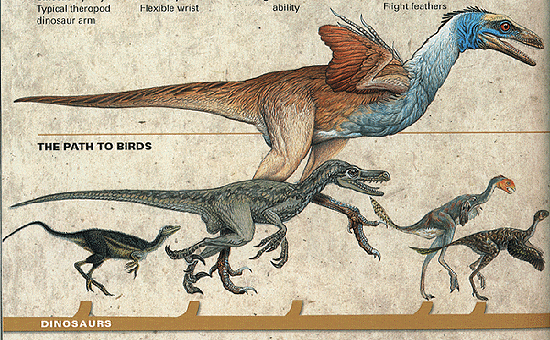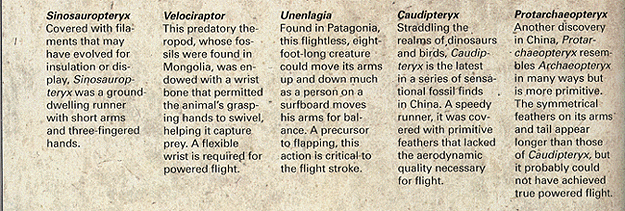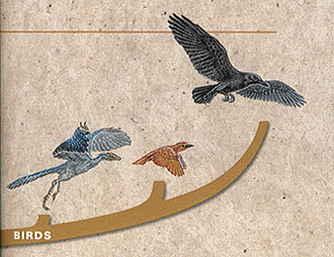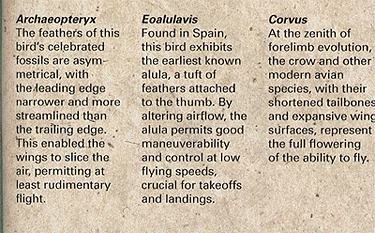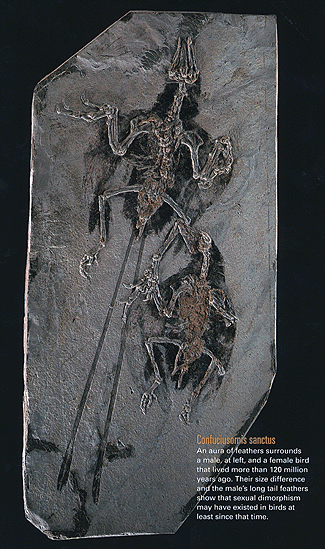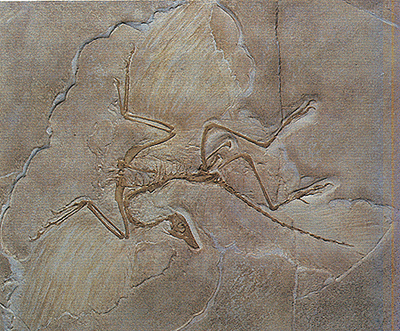 | 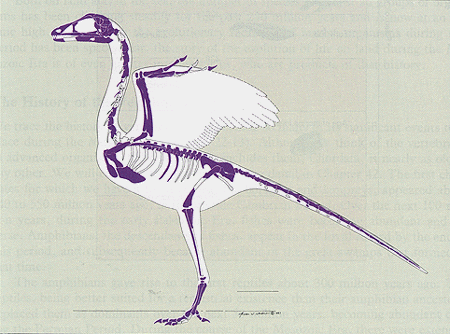 |
One of the several specimens of Archaeopteryx, found in Germany, which is an intermediate form between reptiles and true birds (left). Reconstructed form of Protoavis, a birdlike dinosaur that lived about 200,000 year ago. It was found in West Texas in the eighties.
Even earlier forms of Dinosaurs (Sinosauropteryx, Caudipteryx, Protoarchaeopteryx) with some birdlike features have recently been found in China's Liaoning province. These fossils clearly show that feathers appeared well before the evolution of flight and were, at least in some cases, involved in thermoregulation.
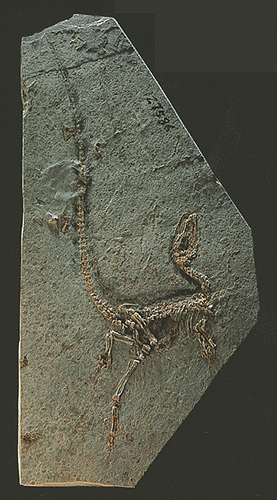
Fossil remains of Sinosauropteryx prima, a carnivorous theropod. It is more than 120 million years old. Note the unusually long tail, and the dark aura of down-like filaments covering the body.
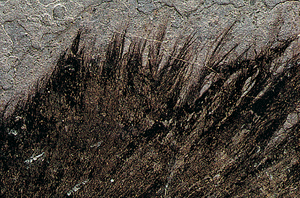
A close-up of the downy body-covering of the Sinosauropteryx. The role of these downs may have been in heat regulation or perhaps attraction of the opposite sex.
Caudipteryx zoui, another transitional theropod from the same location with large feathers near the tip of the tail and on the lower arm. These feathers were not likely to enable the animal to fly. Their function is unknown.
